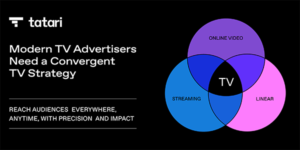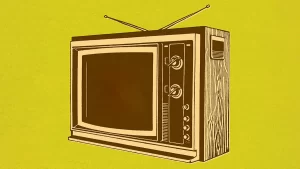We have all seen the long and boring infomercials that were often aired on the “graveyard slot” between 1 A.M-6 A.M. Most of these make you question why you’re still awake or why is your TV even turned on. However, DRTV trends are changing.
DRTV has gone a long way since then and it looks like the industry is undergoing a huge shift. Even though TV still remains as the and scape__6_11.pdf”>most efficient medium (Graph 1; p4) for advertising, the way it is consumed is not the same as 20 years ago. Moreover, the and berger.de/media/pdf/Roland_Berger_German_Digitalization_Consumer_Report_20140718.pdf”>digitalization of lifestyle of the consumers (Figure 12; p23) has been a trigger for the whole industry to evolve.
So let’s forget infomercials and take a look where direct response TV advertising is actually heading.
1. Personalized approach to TV advertisements
Let’s be realistic – the obsolete infomercials don’t work anymore. The 30-minute long presentation of a product is not enough for the consumers who look for interaction and engagement and who use other multimedia devices during their TV session. The second screen has become common in the overall consumer experience, as and-tv-ads-include-a-url”>more than half of the TV consumers in the UK use another screen while watching TV. In order to efficiently engage these consumers, the ads need to be personally directed to them. For instance, Google is working on a technology of personalized TV ads, so the ads are aired according to the interests of a certain consumer, which is quite similar to digital advertising. Only future will tell how this is going to work out for marketers, as the personalized online ads have already received critique from the consumers. There is a thin line between ads being too personalized and neutral. If this line is not crossed, it will probably serve as a very efficient advertising tool in the future.
2. Ad Words and Direct Response Television – an optimized connection
When you see an intriguing product trend on TV, what do you do?
Let me guess – you’ll most likely search for it.
According to a survey by Efficient Frontier, TV ads can drive 80% rise in a brand-related search. Most of the TV ads in the UK. But is that enough? The URL itself might be long and not so easy to memorize and by googling the product, shouldn’t you end up at the website anyway? It’s nothing new that SEO and TV ads must work well together.
New solutions are popping up to improve the presence of brands in search engines. For instance, e Health.com in Google Ad words few minutes after their advertisements aired on TV to move online ads on top of the search engine. It was made possible after Google enhanced the responsiveness of the Ad words interface. Ad words can now be mapped to certain ads, so prospects can easily find the product they are looking for.
Synchronizing online presence of websites and search engines with TV advertisement is now possible and will probably be even more precise in the future.
3. Mobile videos and Direct Response Television – a possible marketing mix
The versatility of DRTV makes it pair well with other advertising mediums. Mobile video is currently booming: in 2016 media publishers expect it to make up almost one-third of their revenue.
A mobile video can be seen as a successful extension of a DRTV campaign, pushing conversion and engaging the target audience who are watching less television.
As mentioned before, most of the consumers go online after seeing a TV advertisement to gain more information about the product. Moreover, most of them use smartphones to do it. During the earlier days, smartphones couldn’t handle displaying videos very well, but seems like the conditions are right for the success of mobile video ads. The biggest problem for media buyers with the mobile video advertising is that ROI remains to be unproven.
Using a tandem of these two mediums will be one of the best choices to go with when creating a marketing mix and in the future we will probably see more mobile videos and TV ads that are connected to each other.
4. DRTV advertising for Mobile apps
As mentioned before, DRTV works incredibly well with a second screen, would it either be a laptop, tablet or a smartphone. New applications for smartphones and tablets alike appear in the App Store every single day. In January 2016, more than 50,000 new applications were submitted for release to iTunes App Store. Without a proper campaign, however, they will probably be forgotten in the vast and rapidly growing library of applications.
Surprisingly, the advertisers are turning back to “old mediums” like TV in order to get a bigger grasp of their target audience. In fact, advertising mobile apps on TV has proven to be very successful. A study conducted by Fetch has revealed that app installs rose between 56-75% when TV ads aired. DRTV is suitable for apps, because it’s cost-effective, so even low-budget apps are able to afford it. In 2015, Appsflyer announced a new platform that measures and attribute TV ads for apps, making the allocation of the budget even more efficient.
Many brands also use applications in their interactive DRTV campaigns. Shazam is often used for that purpose. It creates a call to action to the TV ad, so people will be able to tag it and Shazam will deliver the content on a second screen.
Yet, there’s still a lot to do with measuring the ROI for TV Ads for apps and this is definitely something to look forward to.
5. DRTV ad attribution will be more accurate
The most up-to-date media plans are currently about 89% of a correct number of planned TV advertisements, which means that 1 out of 10 airings is missed. That makes a big difference in the accuracy of attribution of DRTV ads. Proper planning of the airings would take us closer to solving this problem. But why is the attribution imprecise?
There are different methodologies of attribution used to approach the consumers. Some methodologies rely on assumptions by trying to guess which digital users have also seen your TV campaign. This has a negative effect on both; the TV and digital campaigns. The widely-used Nielsen rating system struggles with cross-platform measuring, as there is no overview of the digital consumption and the TV spots are basically bought randomly.
Moreover, Google Analytics is often used to measure the impact of TV on digital responses. However, the data gathered is not TV-based. You’re not able to see information about the channels, for example. It is also not the most precise tool, as the data is gathered minute by minute and that’s not as accurate as when gathered second by second. Again, a huge difference and definitely a matter that needs overall improvement.
We are getting closer to solving this problem, though. The most accurate of the methodologies of attribution is the algorithmic approach that accommodates very granular data and understands TV ad’s impact on network, day part and market area.
For example, Results On Air platform delivers granular data with customer lifetime value down to the very second, which will help you to optimize your ads and get the best ROI.
The “spray and pray” model is still widely popular among TV advertising campaigns, but with the new options available, we might see a shift soon.
Overall, we can see the convergence of online and offline mediums. DRTV works well with digital mediums and serves as a connection between “old media” and new media. We can see that TV needs digital and digital (hence, apps!) need TV to create a better brand experience and increase engagement. This might be a key to creating a very efficient marketing mix, as the measurability of DRTV and digital mediums are also getting more precise.


